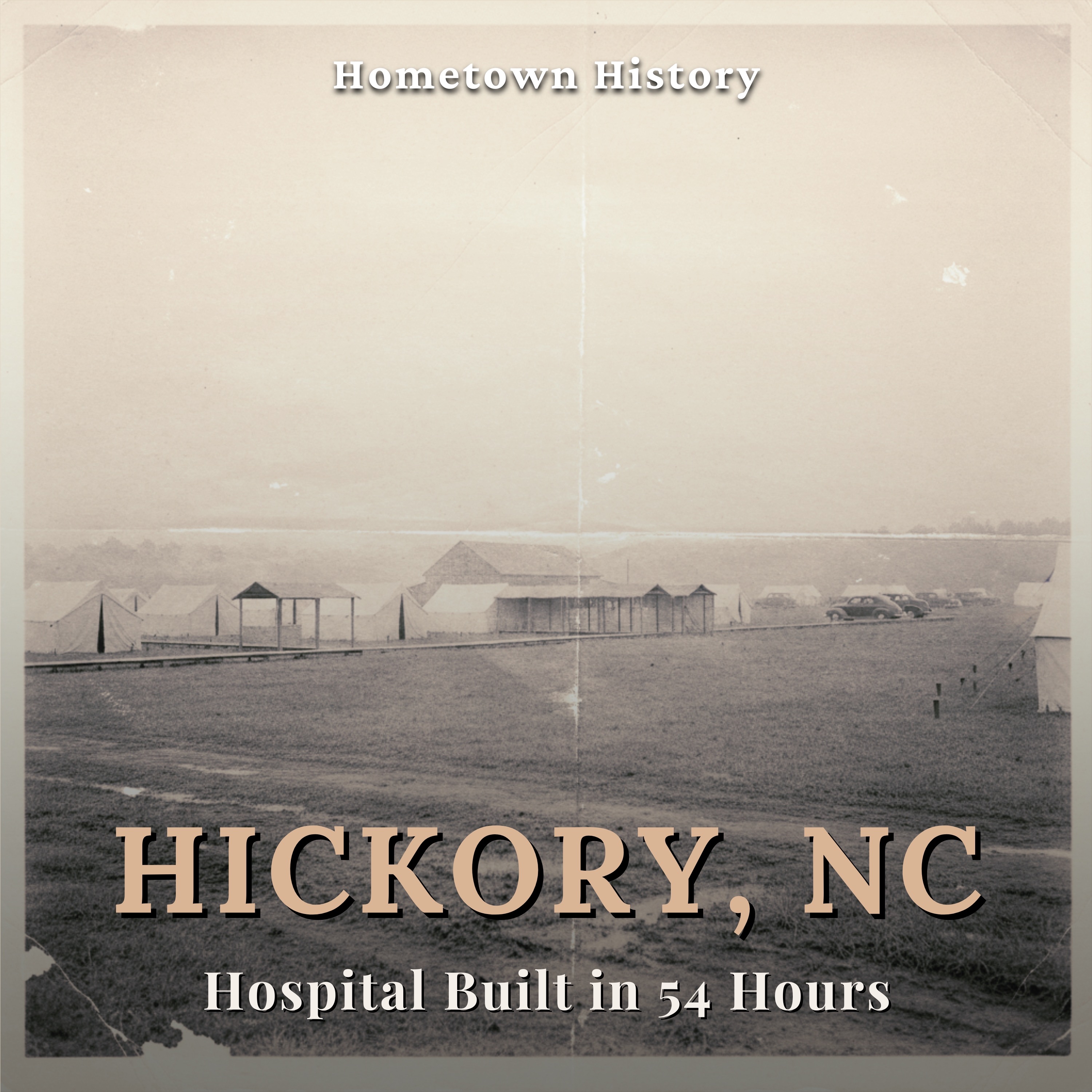

Hickory, North Carolina: The 54-Hour Polio Hospital Miracle of 1944
In the summer of 1944, as World War II raged overseas and medical resources stretched thin, a deadly polio outbreak swept through western North Carolina. When Charlotte's hospitals reached capacity and turned away desperate families, the small city of Hickory faced an impossible choice: watch children suffer without treatment, or attempt something unprecedented. What happened next would become known as the Miracle of Hickory—a community that built a fully functioning 170-bed polio hospital in just 54 hours.On June 22, 1944, Hickory's civic leaders made the audacious decision to convert Camp Sutton, a lakeside summer camp, into an emergency polio treatment center. Working around the clock through the weekend, hundreds of volunteers transformed canvas tents and a stone lodge into hospital wards complete with donated beds, medical equipment, and even iron lung machines. Carpenters, nurses, off-duty soldiers, and ordinary citizens worked shoulder to shoulder. By sunrise on June 24, the first ambulances were already arriving with feverish children on stretchers.The Hickory Polio Hospital opened its doors at dawn on Saturday, June 24, treating its first patients before the paint had dried on the newly erected wards. Over the following months, the facility would care for more than 450 polio patients, providing cutting-edge treatment including Sister Kenny's revolutionary hot compress therapy. Remarkably, the hospital maintained an exceptionally low mortality rate despite the severity of the outbreak. The facility operated for over a year, becoming a beacon of hope during one of North Carolina's worst polio epidemics.Timeline of EventsJune 1, 1944: First polio case confirmed in Catawba County; 24 hours later, 68 regional cases identifiedMid-June 1944: North Carolina Board of Health warns parents to keep children from all public gatherings; fear grips the regionJune 20, 1944: Charlotte Memorial Hospital reaches capacity with overflow tents on lawn; Hickory leaders hold emergency meetingJune 22, 1944: Decision made to convert Camp Sutton into emergency polio hospital; construction begins immediatelyJune 23-24, 1944: 54-hour construction marathon—hundreds of volunteers work through the nightJune 24, 1944 (sunrise): First patients arrive; hospital officially opens with 170 beds readySummer 1944-1945: Hospital treats 450+ polio patients with notably low mortality rates using Sister Kenny method1945: Facility gradually transitions to other uses as outbreak subsidesLegacy: Hickory's achievement inspires March of Dimes fundraising that helps develop Salk vaccineDuring World War II's darkest hours, when the nation's medical resources focused overseas, American communities faced health crises at home with limited help. The polio outbreak of 1944 struck during wartime rationing, with many doctors and nurses serving in the military. Hickory's response exemplified the home front's determination to protect children when institutional support proved insufficient.Historical SignificanceThe Miracle of Hickory represents one of the most remarkable examples of grassroots medical response in American history. In an era before effective vaccines, when polio terrorized every summer and paralyzed thousands of children annually, Hickory's citizens demonstrated that ordinary people could create extraordinary solutions through collective action and compassion. The hospital's success directly challenged assumptions about what communities could accomplish with limited resources and wartime constraints.Beyond its immediate medical impact, the Hickory story became a powerful fundraising tool for the National Foundation for Infantile Paralysis (March of Dimes).
Episode Details
About This Episode
In the summer of 1944, as World War II raged overseas and medical resources stretched thin, a deadly polio outbreak swept through western North Carolina. When Charlotte's hospitals reached capacity and turned away desperate families, the small city of Hickory faced an impossible choice: watch children suffer without treatment, or attempt something unprecedented. What happened next would become known as the Miracle of Hickory—a community that built a fully functioning 170-bed polio hospital in ju...